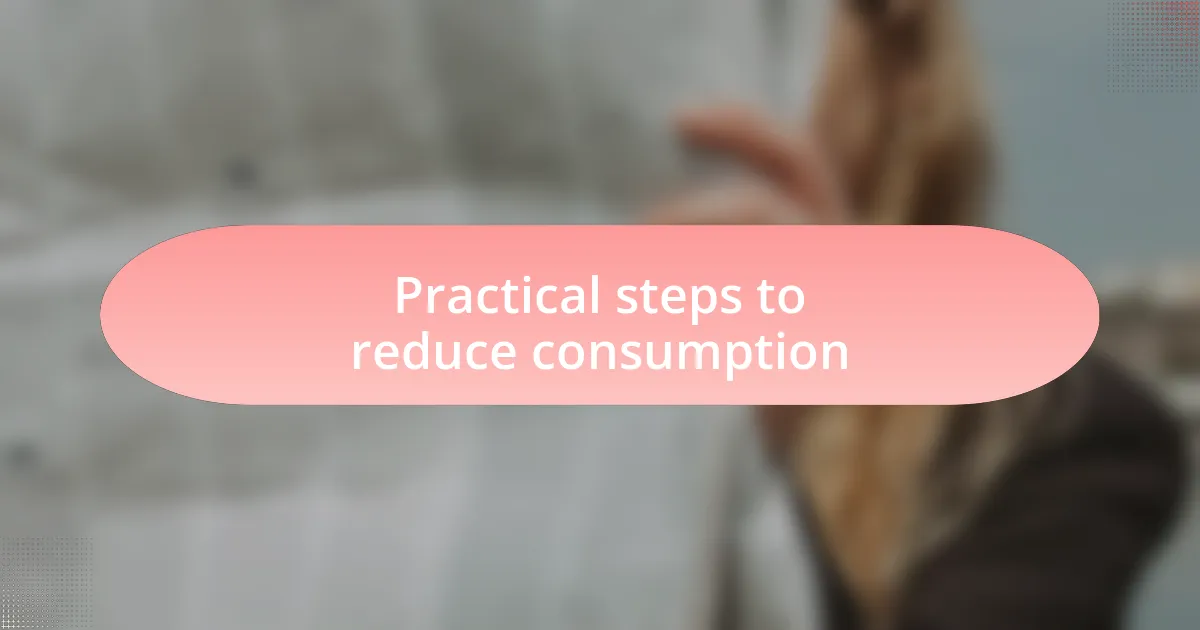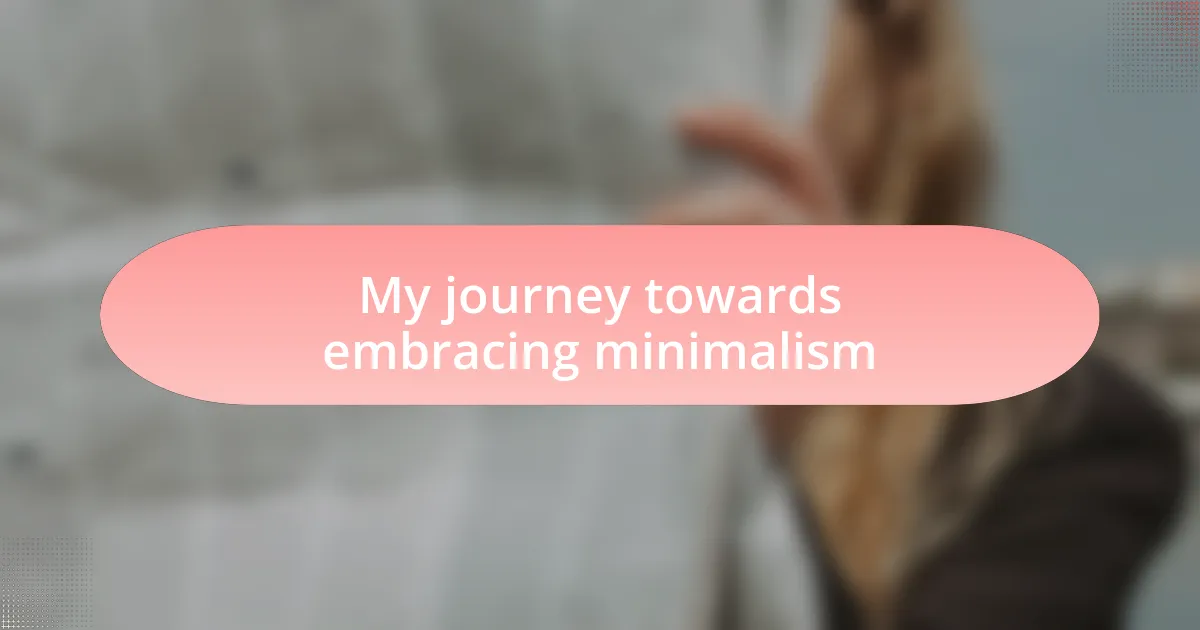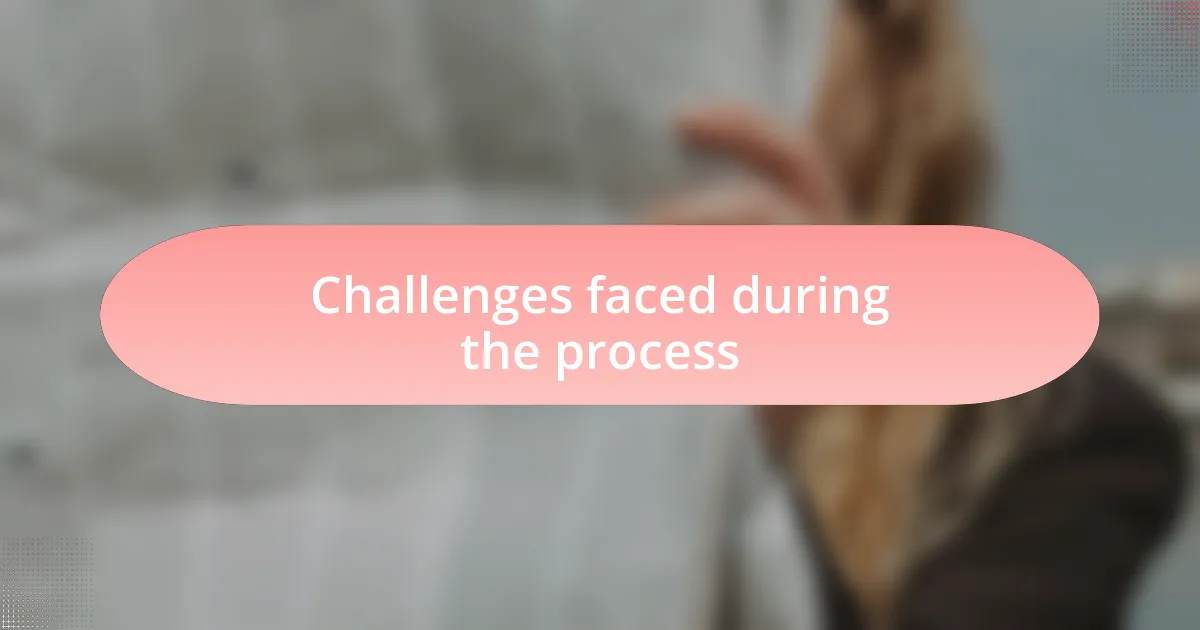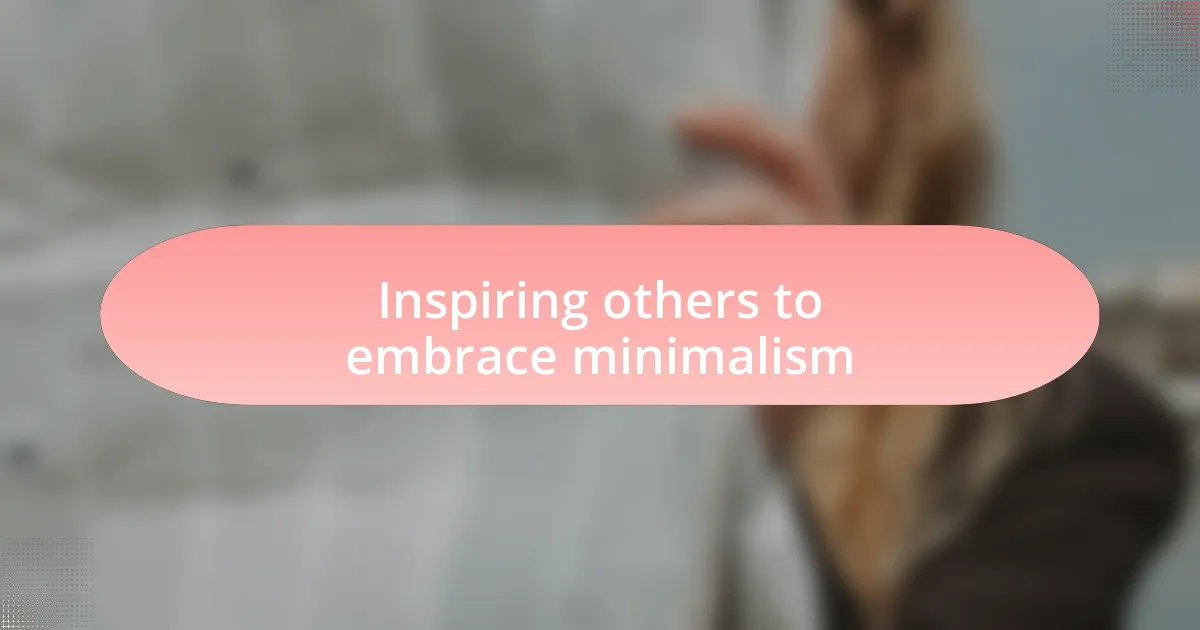Key takeaways:
- Minimalism promotes sustainability by encouraging reduced consumption, which lessens environmental impact and resource depletion.
- The one-in, one-out rule can help manage clutter and reinforce mindful purchasing habits.
- Embracing minimalism facilitates a shift from valuing possessions to prioritizing meaningful experiences and relationships.
- Sharing personal journeys of minimalism can inspire others to reflect on their consumption habits and pursue a simpler lifestyle.

Understanding minimalism for the environment
Minimalism, at its core, is about simplifying one’s life to create space for what truly matters. When I first started my journey, I was struck by the realization that every item I owned carried an environmental weight. Have you ever considered how much energy and resources go into making the products we take for granted?
As I began to shed unnecessary possessions, I felt a profound lightness and freedom. Each item I let go of represented a choice—choosing sustainability over excess. It made me question: how many things do we really need to be happy and fulfilled?
I also started to appreciate how minimalism isn’t just a personal philosophy; it’s a powerful stance for the environment. By consuming less, we collectively decrease demand, which can significantly reduce waste and resource depletion. It’s a journey of mindfulness that resonates deeply with my values and can inspire others to reflect on their own habits.

Practical steps to reduce consumption
One of the first practical steps I took to reduce my consumption was to implement a one-in, one-out rule. For every new item I brought into my home, I made sure to let go of something else. It was surprisingly liberating to realize that I didn’t need to clutter my space with unnecessary possessions. Have you ever felt that thrill when you declutter? It’s a small change, but it makes a big difference in how I approach shopping.
I also became more intentional about my purchases by asking myself, “Do I really need this?” before buying anything. This simple question often revealed the truth: more often than not, I was drawn to extras rather than essentials. I remember standing in front of a beautifully designed coffee mug in a store; it was tempting, but then I thought about the mugs I already owned. In that moment, I chose to walk away, reinforcing my commitment to consuming less and finding joy in what I already had.
Additionally, I started to prioritize quality over quantity—investing in durable, sustainable products that would last longer. This shift not only reduced what I bought but also nurtured a deeper appreciation for craftsmanship. I recall purchasing a handcrafted wooden kitchen utensil that, while more expensive upfront, has proven to be a timeless piece in my home. It sparks joy every time I use it, reminding me that sometimes, a singular high-quality item can be far more fulfilling than several fleeting trends.

My journey towards embracing minimalism
As I embarked on my journey towards minimalism, I found myself reflecting on what truly mattered to me. I recall a moment standing in my overcrowded living room, feeling overwhelmed by the sheer number of items I owned. I had to ask myself, “Is this stuff making me happy, or is it just weighing me down?” That realization sparked a shift in my mindset, urging me to focus on experiences rather than possessions.
One of the pivotal moments for me was hosting a spontaneous gathering with friends. Instead of worrying about my clutter, I learned to prioritize meaningful connections. I realized that the laughter and conversations we shared were the real treasures, far more valuable than any decorative item lingering on my shelves. Did I really need all that stuff to create lasting memories? Absolutely not—it was the shared moments that brought warmth and fulfillment.
Transitioning into minimalism wasn’t without its challenges. I often battled with the urge to hold onto sentimental items. I remember going through a box of old letters, feeling each one tugging at my heartstrings. Yet, I started to understand that memories reside within us, not solely within physical objects. By letting go of these items, I made space—not just in my home, but in my life—for new experiences and relationships that truly enrich my journey.

Challenges faced during the process
As I embraced minimalism, I quickly realized that letting go of possessions wasn’t just freeing—it was emotionally taxing. There were days when I felt a pang of guilt for parting with belongings that held memories, like my childhood art supplies. I would question, “Am I losing a piece of my history?” But every time I revisited this discomfort, I found clarity in the idea that my true identity wasn’t tied to these items; rather, it blossomed in the simplicity and lightness that followed.
Another challenge I encountered was the societal pressure to conform to consumerism. Friends would invite me to sales or suggest trendy home decor, and I often found myself battling the urge to buy. I’d think, “Why am I fighting so hard against something so many people celebrate?” It was tough to hold true to my values in a world that equates worth with accumulation. Yet, each time I resisted the pull of materialism, I felt a surge of empowerment—like I was reclaiming my space from external influences.
Lastly, the initial phases of decluttering tested my resolve. I would find myself overwhelmed by the sheer volume of items I had accumulated over the years. I distinctly remember sitting on the floor surrounded by bags destined for donation, thinking, “How did I let it get this far?” It’s a daunting task, but breaking it down into smaller goals helped. Each little victory fueled my motivation, reminding me that minimalism wasn’t just a decluttering process—it was a journey toward a more intentional life.

Inspiring others to embrace minimalism
As I shared my minimalism journey with others, I noticed a spark of curiosity in their eyes. I vividly recall a friend who, after hearing about my experience, decided to tackle her own clutter. She said, “If you can do it, maybe I can too!” That simple statement lit a fire in me. It became clear: discussing my path could inspire others to reflect on their own consumption habits and the benefits of living with less.
One day, while volunteering for a local environmental project, I started a conversation about the impact of consumerism. I asked my fellow volunteers, “Have you ever thought about how much we really need?” The openness of the dialogue surprised me. People shared their struggles with excess and how minimalism had crossed their minds as a solution. I felt a wave of collective understanding—it was refreshing to see how a simple question could ignite a sense of community and shared purpose.
Another moment that stands out was when I hosted a minimalism workshop. As participants began to share their stories, I could feel the emotional weight lift collectively. One attendee exclaimed, “I never realized how freeing it is to let go!” That affirmation reminded me how vital it is to create spaces for conversations about minimalism. It’s amazing how one honest discussion can encourage others; it show that they, too, can embark on their own journey toward simplicity.